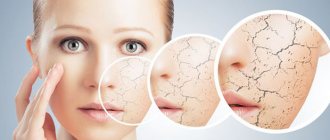What is vitamin D?
Vitamin D is a fat-soluble vitamin that promotes calcium absorption, regulates bone growth, and plays a role in immune function.
Your skin produces vitamin D when exposed to sunlight. However, if you spend most of your time indoors or live in high latitudes, you will need to get this vitamin from your diet.
Good sources of vitamin D include fatty fish, fish oil, egg yolk, butter and liver.
However, it can be difficult to get enough of this vitamin from your diet since rich natural sources are rare. For these reasons, people often don't get enough vitamin D.
Fortunately, many food manufacturers add it to their products, especially milk, margarine and breakfast cereals. Supplements are also popular.
To prevent symptoms of vitamin D deficiency, regularly eat foods rich in the vitamin, spend a certain amount of time in sunlight each day, or take a supplement.
Because vitamin D is fat-soluble, it is best to choose an oil-based supplement or take it with a meal that contains some fat ().
The vitamin has two main forms:
- Vitamin D2 (ergocalciferol)
- Vitamin D3 (cholecalciferol)
Their differences are discussed in detail below.
Summary:
Vitamin D is a fat-soluble vitamin that exists in two main forms: vitamin D2 (ergocalciferol) and vitamin D3 (cholecalciferol).
Indications for use
Doctors recommend using vitamin D2 for diseases such as rickets, tuberculosis, psoriasis, as well as for calcium metabolism disorders. Doctors advise taking vitamin D2 to treat and prevent hypovitaminosis. Very often the drug is prescribed for the treatment of kidney and liver diseases, as well as for women while taking birth control pills.
This element is also prescribed during the recovery period after injuries and fractures.
Vitamin D3 comes from animal foods, and vitamin D2 comes from plant foods.
The two forms of vitamin D differ depending on dietary sources.
Vitamin D3 is found only in animal foods, while D2 mainly comes from plant sources and fortified foods.
Sources of Vitamin D3
- Oily fish and fish oil
- Liver
- Egg yolk
- Butter
- Nutritional supplements
Sources of Vitamin D2
- Mushrooms (grown in ultraviolet light)
- Fortified products
- Nutritional supplements
Because vitamin D2 is cheaper to produce, it is the most common form in fortified foods.
Summary:
Vitamin D3 is found only in animal products, and vitamin D2 is found in plant foods.
Vitamin D3 is made in your skin
Your skin produces vitamin D3 when exposed to sunlight.
Specifically, UV-B ultraviolet radiation from sunlight causes the formation of vitamin D3 from the compound 7-dehydrocholesterol in the skin ().
A similar process occurs in plants and fungi, where ultraviolet radiation leads to the formation of vitamin D2 from ergosterol, a compound found in vegetable oils ().
If you regularly spend time outdoors, wearing light clothing and not wearing sunscreen, you can get all the vitamin D you need.
For Indians, about half an hour of midday sun twice a week provides sufficient ().
Just keep in mind that this exposure duration does not apply to residents of countries far from the equator. In these countries it may take you longer to achieve the same results.
However, be careful not to spend too much time in the sun without sunscreen. This is especially important if you have fair skin. Sunburn is a major risk factor for skin cancer ().
Unlike dietary vitamin D, you cannot overdose on vitamin D3, which is produced in your skin. If your body already has enough of this nutrient, your skin simply produces less of it.
However, many people get very little sun. They either work indoors or live in a country where there is little sunlight in winter. If this applies to you, make sure you eat plenty of vitamin D-rich foods regularly.
Summary:
Your skin produces vitamin D3 when you spend time in the sun. In contrast, vitamin D2 is produced by plants and fungi exposed to sunlight.
Vitamin D3 is more effective in improving vitamin D status
Vitamins D2 and D3 are not equal when it comes to improving your vitamin D status.
Both are effectively absorbed into the blood. However, the liver metabolizes them differently.
The liver metabolizes vitamin D2 to 25-hydroxyvitamin D2 and vitamin D3 to 25-hydroxyvitamin D3. These two compounds are collectively known as calcifediol.
Calcifediol is the main circulating form of vitamin D, and its blood levels reflect your body's reserves of the nutrient.
For this reason, your healthcare provider may assess your vitamin D status by measuring your body's calcium levels ().
However, vitamin D2 appears to provide less calcifediol than an equal amount of vitamin D3.
Most studies show that vitamin D3 is more effective than vitamin D2 in increasing blood levels of calcifediol (, ).
For example, one study of 32 older women found that a single dose of vitamin D3 was nearly twice as effective as vitamin D2 in raising calcifediol levels ().
If you plan to take a vitamin D supplement, consider taking vitamin D3.
Summary:
Vitamin D3 appears to be better than D2 in improving vitamin D status.
Use of the drug during pregnancy and breastfeeding
The drug can be used starting from the 30-32nd week of pregnancy. Particular caution should be taken when prescribing vitamin D drops to women over 35 years of age. Hypercalcemia in the mother, associated with too long use of the drug D2, can cause this disease in the newborn baby. In this case, delayed mental development, as well as diseases of systems and organs, may be detected.
During pregnancy, doctors strongly do not recommend taking the drug in excessively large doses, as this can adversely affect the health of not only the mother, but also the unborn child. The same applies to a nursing mother, since the supplement she takes can cause an overdose in her baby.
Vitamin D2 supplements may be of lower quality
Scientists have expressed concern that vitamin D2 supplements may be of lower quality than D3 supplements.
In fact, research shows that vitamin D2 is more sensitive to humidity and temperature fluctuations. For this reason, vitamin D2 supplements may be more likely to go bad over time ().
However, whether this has anything to do with human health is unknown. Additionally, no studies have compared the stability of vitamins D2 and D3 dissolved in oil.
Until new research proves otherwise, you should not worry about the quality of vitamin D2 supplements. Just make sure your supplements are stored in a closed container, at room temperature, in a dry place and away from direct sunlight.
Summary:
Vitamin D2 supplements may be more likely to spoil in storage. However, it is unknown whether this applies to oil-based vitamin D2. More research is needed to explore the implications of this for human health.
How to Improve Your Vitamin D Status
Luckily, there are many ways to improve your vitamin D status.
Below are a few ideas:
- Eat mushrooms that have been exposed to ultraviolet light ()
- Take fish oil supplements such as cod liver oil
- Eat oily fish twice a week ()
- Drink milk or orange juice fortified with vitamin D
- Eat eggs and butter ()
- Spend at least half an hour in the sun every day if possible
If you take vitamin D supplements, do not exceed the safe upper intake level, which is 4,000 IU (100 mcg) per day for adults ().
According to the US Institute of Medicine, the recommended daily intake is 400-800 IU (10-20 mcg), but recommended supplement doses range from 1000 to 2000 IU (25-50 mcg) per day.
Summary:
You can increase your vitamin D levels by regularly eating foods rich in vitamin D and spending time in the sun.
Reviews
Many mothers who give this supplement to their children notice a positive effect a few months after starting use. However, it is very important not to exceed the dosage continuously. If you do this several times, nothing bad will happen, but a constant overdose can lead to negative consequences. According to reviews, cases of vomiting and dizziness were observed, the causes of which were inappropriate use of the drug.
You cannot self-medicate. Only a doctor can determine the need to use a vitamin. In this case, you need to undergo regular examinations and tests.
The drug produces maximum results when combined with other vitamins and minerals. But in this case you also need to consult a doctor.
The supplement was also liked by pregnant women who lack calcium during pregnancy.
Summarize
- Vitamin D is not a single compound, but a family of related nutrients. The most common dietary forms are vitamins D2 and D3.
- Form D3 is found in fatty animal products such as fish oil and egg yolk. Your skin also produces it in response to sunlight or ultraviolet radiation. In contrast, vitamin D2 comes from plants.
- Interestingly, vitamin D3 is more effective in increasing vitamin D levels in the blood. Although scientists debate the relevance of this for human health.
- To maintain adequate vitamin D levels, regularly eat plenty of vitamin D-rich foods or spend some time in the sun. If you take a supplement, vitamin D3 is probably your best choice.
Tags: Vitamin D
- Related Posts
- Eurycoma longifolia: properties, side effects, dosage
- What is vitamin F? Application, properties, product list
- Vegetable glycerin: use, benefits and harm
« Previous entry
Common features
If we consider the general features of vitamin D and D3, then there are quite a lot of them. This is primarily due to the fact that d3 is a form of d .
- Vitamins are antirachitic agents.
- Participate in the regulation of calcium and phosphorus metabolism.
- Protects against a number of diseases.
- They have a beneficial effect on the overall functioning of the body.
- Formed under the influence of ultraviolet rays.
- Contained in a number of products.
- Lack of vitamins results in a number of disorders.
- Overdose leads to a number of side effects.
- Contraindicated for certain groups of people.
- Taking vitamins should be agreed with a specialist and carried out exclusively under the strict guidance of doctors.











